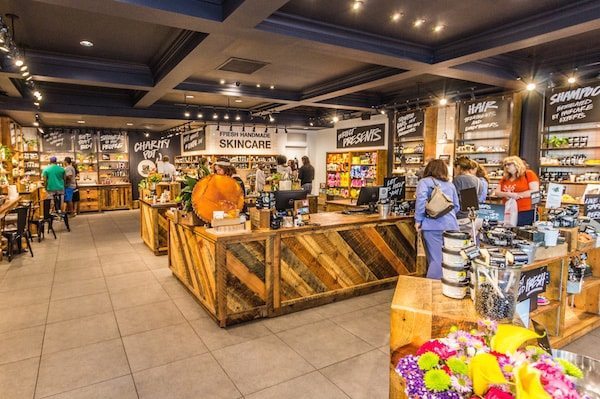Getting proper financing for growing food businesses is one of the most challenging obstacles food business owners face. Those entrepreneurs need great financial systems to accurately communicate with financial stakeholders and they need to communicate their business model (i.e. how their business makes money) in a way that resonates with the financial community. This high bar for financial communication is matched in today’s marketplace by the high bar for entry into the marketplace, both in terms of requiring high quality, consumer-driven products and in how much financing it takes to have the food business reach profitability at the proper scale.
While some food businesses can finance their business utilizing loans and lines of credit from banks, many food entrepreneurs, and especially those aspiring to be national brands, will have to take on outside equity investors to adequately capitalize their business for the top-line sales growth needed to break even. Even when taking investment aligns with the short and long-term goals of the food entrepreneur, it comes with expectations of investors having board seats and other oversight mechanisms over the direction of the business.
Making the decision to accept investment can be overwhelming for food entrepreneurs. Some owners feel like they are selling out if they take investment because they are giving up control. However, investor money, taken at the right time to achieve the business’ goals, doesn’t have to be selling out. When entering into any relationship, clarity upfront about expectations and goals is key. Food entrepreneurs should court investors that align with the business’ values and goals, taking care to clearly communicate those goals before entering into a financial relationship.
Investors help entrepreneurs increase their impact by providing financing that allows the business to build the business’ sales and value. And, because investors help share the risk of the business, they also become invaluable resources for food business owners. Investors leverage their expertise and the expertise of their networks to help ensure the business is doing everything it can to succeed, including in courting other investors for successive fundraising rounds if needed.
Food entrepreneurs themselves often feel changed when taking outside investor capital. They feel the weight of the responsibility of paying back those investors with a return. They often work even harder than they were before because others are sharing the risk with them and are emotionally invested in their business as well. Understanding and accepting the responsibility that comes with taking investor money, when taken from the right people at the right time, can allow food entrepreneurs to grow their impact in ways they could not do on their own.
And now, our roundup of the best food and beverage finance news, events and resources from around the web…
Business Model Insights
- How Much Do Big Agrifood Companies Really Know About Their Supply Chains? (AgFunder News) – “Consumers and investors today are looking closer than ever at the food they buy (or buy into) with concerns about pesticide use, water consumption, animal welfare and biodiversity among others issues. For consumers, decisions about what to buy are largely based on the claims that companies are able to make about the sustainability of their sourcing methods. However, the methods and tools used to collect this data is not keeping up with the pace of demand.”
- 3 Essential Financial Statements for Your Small Business (SBA Blog)
- Mastering omnichannel retail: 5 tips and best practices (FoodDive)

Raising Capital
- As Silicon Valley Gets ‘Crazy,’ Midwest Beckons Tech Investors (New York Times) – “Venture capital, the financial fuel for new companies, is concentrated on the coasts. More than 50 percent of all venture capital money spent in the United States goes to companies in California alone, according to the National Venture Capital Association. But some investors see plenty of potential in the center of the country, with local entrepreneurs and big investors scouting the Midwest for start-up investments as well as additional follow-on rounds of funding. The rationale for investing in the Midwest combines cost and opportunity. A top-flight software engineer who is paid $100,000 a year in the Midwest might well command $200,000 or more in the Bay Area. The Midwest, the optimists say, also has ample tech talent, with excellent engineers coming out of major state and private universities in the region.”
- Building Yumbutter Into a National Nut and Seed Butter Brand (Edible-Alpha™ Podcast)
- 7 investment firm leaders discuss the future of funding good food (New Hope Media)
CPG/National Brands
- 5 Ways to Maximize ROI on Category Assessments (CMKG) – “We spend a lot of time analyzing our business, but we need to ask whether we are looking at the entire picture or just scratching the surface: 1) Category assessments should be broadly used in organizations: for category reviews, business reviews, tactical work and even brand health assessments. 2) Incorporate new shopper data sources and perspectives throughout category assessments for better, shopper-focused opportunity identification. 3) Provide easy access to data — ultimately through data integration. 4) Define a consistent analytic pathway to create a common best-in-class approach to analysis that maximizes the use of all data available. 5) Give purpose to your analysis to identify what you are trying to accomplish in your category assessment / category review.”
- Marketing pro tip: How to create an emotional connection with your customers (New Hope Media)
- Beverage Packaging Design: Key Questions To Start With (MyDrink Beverages)

Market Trends
- Frozen finally gains traction after years of struggling by playing up convenience (FoodNavigator-USA) – “After giving the frozen section the cold shoulder for years, consumers’ attitudes towards the category could be thawing out as manufacturers and retailers better tell the segment’s story around convenience, clean label and food waste reduction.”
- Consumers eat more when food is a ‘snack,’ but will brands change their marketing? (FoodDive)
- The new marketing playbook acknowledges consumers are in control of brands’ fate (FoodNavigator-USA)
Farming and AgTech
- FSMA’s produce rule helps sprout tougher food safety measures on the farm (FoodDive) – “When the Food Safety Modernization Act (FSMA) was signed into law in 2011, much of the focus was on the tougher standards for manufacturing and processing facilities. But it also brought mandated food safety practices somewhere relatively new: America’s 2.1 million farms. FSMA’s produce safety rule sets standards for production, harvest and handling of fruits and vegetables in order to decrease the risk of contamination and will be enforced for most produce farms starting in January 2018. While growers are likely aware of the risks of contamination, many farmers across the country haven’t put standards in place to control safety of their crops. And with FSMA’s produce safety rule now being finalized — and taking effect in a few months — it’s time for everyone to make changes in their practices.”
- Organic Farmers Are Worried About Getting Squeezed by Big Business (Bloomberg Businessweel)
- There Are a Lot of Palm Pilots Out There but No iPhones Yet In Consumer Indoor Farms (AgFunder News)

Deals/M&A
- Our Meatless Future: How The $90B Global Meat Market Gets Disrupted (CB Insights) – “Will a meatless food industry featuring lab-grown meat, seafood substitutes, and insect protein be the future of food? Food giants from Tyson to Cargill are working to navigate a future where protein isn’t dominated by traditional animal sources.”
- Report Reveals 22 Most ‘Investible’ Post-Harvest Food Waste Technologies (AgFunder News)
- Natural products CEOs keep up with changes, even as Wall Street enters industry (BizWest)
Industry Events
- Nosh Live (Project Nosh) – $, 11/30 in Santa Monica, CA
- Local Foods Marketplace (Feast) $, 12/1 in Rochester, MN. Tera Johnson speaking.
- Urban Farming is A Business (MidWest Urban Farming Institute) – $, 12/7 – 12/8 in Chicago, IL. Tera Johnson presenting.





